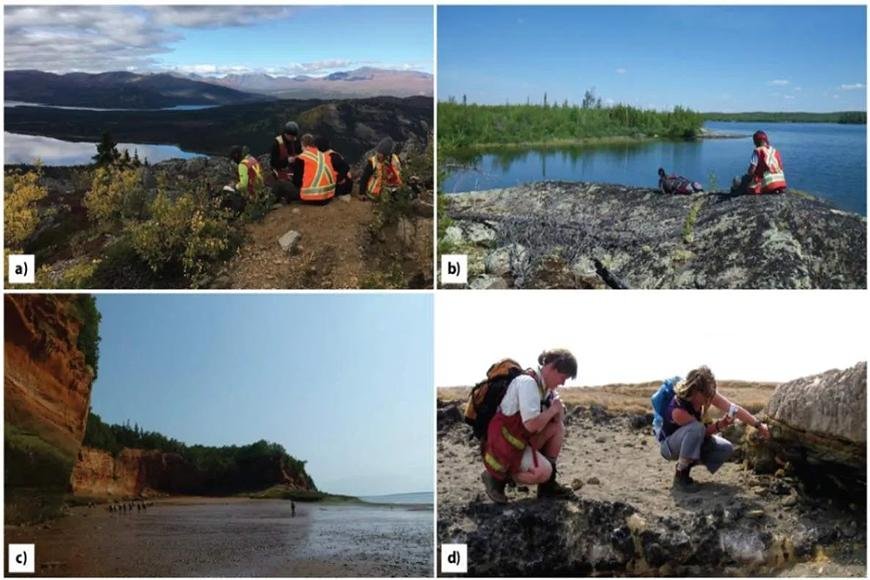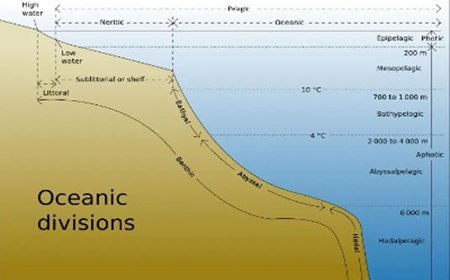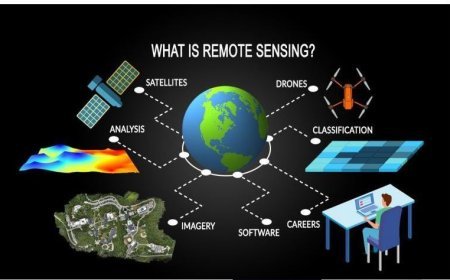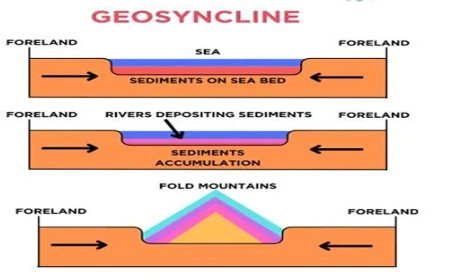GEOMORPHOLOGY AND MINERAL EXPLORATION
From Mountains to Minerals: Geomorphology bridges the gap, connecting Earth's form to valuable resources.

Geomorphology and Mineral Exploration
- Geological structure is linked to mineral reserves.
- The way the landscape appears in some places may reveal geological features.
Surface Expression of Ore Bodies
- Some ore bodies have clear surface features, like ore, gossan, or leftover minerals that stick out of the ground, or structural features like faults, cracks, and breccia zones.
- A slope that stands out, like the one in Broken Hill, Australia, could show where lead-zinc lodes are.
- Quartz lines could stand out because they are much less likely to wear away than the nearby rock that isn't silicified, like in Chihuahua, Mexico.
- Depressions or signs of sinking may be present in some veins, such as calcite veins, and mineralized areas.
Weathering Residues
- The weathering of rocks during current or previous geomorphic cycles produces many minerals that are crucial to the economy.
- Geomorphology can help you find these minerals. Some ores of manganese and nickel, clay minerals, caliche, and iron ore may be left over after ageing.
- Weathering and erosion are constant processes that erode and wear away the rocks on the earth's surface. The results of rock weathering may be useful in business.
- Plenum- or nearly-plenum-plain surfaces are often where leftover weathering products build up.
- Most of the time, these minerals can be found on surfaces that have been worn away by erosion since the Tertiary period.
- When aluminous minerals break down in the earth's crust, they leave behind bauxite.
- This can be either a small amount of solid aluminous material in dolomites and limestones or the minerals themselves.
Placer deposits
- Placer deposits, which are collections of materials created when metals wear away due to chemical weathering or erosion, contain heavy metals.
- Placer deposits of minerals are the result of specific geomorphic processes and may have their own unique geographic expression when they are found in certain topographical places.
- The type of rock that makes up the ground floor may affect how the placers are deposited.
- Residual placers, also known as "seam diggings," are left over from the weathering of quartz veins or stringers. They are generally small and fall into lodes.
- This type of placer is between residual placers and alluvial placers because it is made when leftover materials creep down a slope.
- This kind of gold placer has been found in California, Australia, New Zealand, and other places. The koelits are colluvial placers, and the kaksas are alluvial placers.
- Alluvial placers in Russia, Colombia, and other places give us about a third of the world's silver.
- Some of the most valuable minerals that can be found in alluvial placers are gold, tin, and diamonds.
- People find diamonds in the Vaal and Orange River districts of South Africa, the Lichtenburg area of South Africa, the Belgian Congo, and Minas Geraes, Brazil, by collecting rocks that have been washed from rivers.
- It is where about 20% of the world's diamonds are found.
- Gold has been found in Australia and Lower California, Mexico, in aeolian placers.
- Bajada placers grow on the gravel rim of a cornice and in the alluvial fans that meet in the middle of a bajada.
- They are more likely to be near the base of a mountain than on the flatter sides of a basin.
- Gold and pearls have been found in beach placers in California and Alaska.
- Zircon has been found in India, Brazil, and Australia, and ilmenite and monazite have been found in Travancore, India.
- Placers can be found with the help of magnetic testing and digging.
- Most of the time, a magnetic scan will be useful because magnetite is often found near gold.
- If the bedrock is a basic type with a stronger magnetic field than the placer gravels, magnetic "lows" may show where the filled pathways are.
- D. Thornbury says, "Knowledge of the bedrock geology, application of geophysical surveying, test drilling, and interpretation of aerial photographs are all important parts of the search for these buried placers.
- But the most important thing to know about this search is the geomorphic history of the area."
Oil Exploration
- A lot of oil fields have been found because of how interesting their landscapes look.
- Mineral oil is thought to have been made when organic matter broke down and was composted.
- Once the oil is formed, it gets stuck in rocks under structure traps or sedimentary traps.
- Anticlines and synclines, two bent sedimentary layers, are responsible for bringing the permeable and impermeable layers closer together.
- Mineral oil is well preserved in the upper permeable beds and the lower impermeable beds.
- Mineral oil is usually found in complexes of porous and permeable rocks, with layers of solid rocks below.
- Mineral oil can be found in sandstone and limestone because they are porous and allow oil to pass through them.
- The bed that doesn't let water through is made of rock. Tones may show an anticlinal or domal structure in places with thick tropical woods that make it impossible to see the land's surface.
- Today, the search for oil uses more delicate signs of geological features that are good for oil to build up.
- One such method is using overhead photos to look at the drainage of a landscape.
- It is necessary to have a complex understanding of how water drains in a certain place; a geomorphologist would likely have this knowledge.
- It is especially helpful to do a drainage study in places where rocks have low dips and the terrain has little relief.
- Leverson says that a lot of oil and gas sources are connected to unconformities, which are old erosion surfaces.
- This means that a petroleum geologist has to deal with areas that are underground.
- Old erosion surfaces become stratigraphic traps when they shrink and become covered in layers. Most of these happen along fault lines.
What's Your Reaction?



































